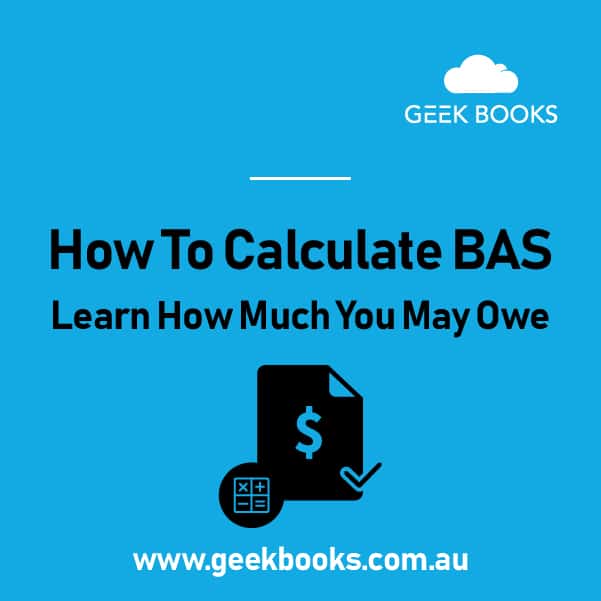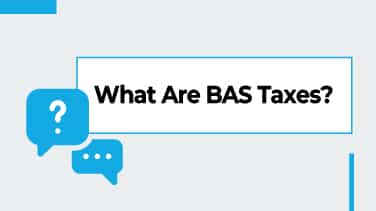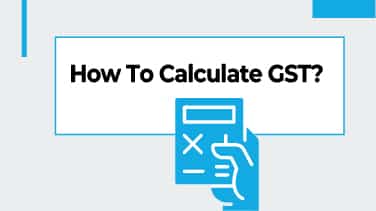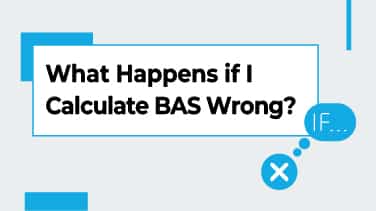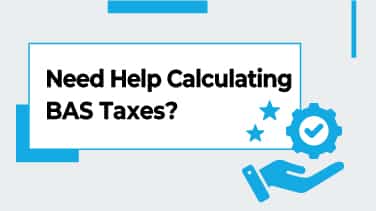Understanding the ins and outs of Business Activity Statement (BAS) taxes can feel like trying to diffuse a bomb.
The wires are confusing, the clock is ticking, and one wrong move can be costly!
Take a deep breath- this guide is your bomb squad!
We’ll walk you through how to calculate BAS tax for your business, with a laser focus on GST.
What Are BAS Taxes?
BAS taxes include
- Goods and Services Tax (GST)
- Pay As You Go (PAYG) income tax
- Fringe Benefits Tax (FBT)
- Fuel Tax Credits (FTC)
- Luxury car tax (LCT)
- Wine Equalisation Tax (WET)
The most substantial tax in a Business Activity Statement often depends on the nature and size of your business.
However, the GST tends to be a significant component for many businesses.
Why?
GST applies to a broad range of goods and services, making it more applicable in day-to-day operations.
It can add up quickly, especially if your business has a high volume of transactions.
So, while other taxes like PAYG or FBT are also considerable, GST often takes the lead in terms of the overall impact on your BAS.
For more information on “What is BAS tax?” read our helpful guide here.
How To Calculate GST
Follow this step-by-step guide to help you figure out how to calculate GST for BAS.
Step 1: Choose Your Accounting Method
First, you must decide on an accounting method– either accrual or cash.
Your choice will affect how you report and calculate GST.
With accrual accounting, you record transactions when you issue or receive an invoice.
In cash accounting, you record transactions when actual payment takes place.
Here’s a brief rundown of each:
Accrual Accounting
- Pros: Matches revenue with expenses, providing a more accurate long-term financial picture.
- Cons: More complex, may count income you haven’t received yet.
- Example: If you issue an invoice in June but get paid in July, you report the GST for June.
Cash Accounting
- Pros: Simpler, only counts money you’ve actually received or paid.
- Cons: Can give a skewed view of long-term financial health.
- Example: If you receive payment in July, you report the GST for July, regardless of when you issued the invoice.
Step 2: Identify GST-Applicable Sales and Purchases
List all your sales and purchases subject to GST and keep all the invoices, receipts, and records related to these transactions.
As an example, let’s say you run a cafe.
You would list
- Sales of coffee, pastries, and other menu items.
- Purchases like coffee beans, milk, and cleaning supplies.
For each sale, note the sale price without GST. Do the same for each purchase.
This makes it easier to calculate the GST in the next step.
Remember, some items, like certain foods and medical supplies, may be GST-free.
Make sure you only include transactions where GST applies.
Step 3: Calculate GST Collected and Paid, Plus Net GST
For each sale, multiply the price by 0.1 to find the GST collected.
Do the same for purchases to find the GST you’ve paid.
Subtract the total GST paid from the total GST collected.
The result is your net GST, which you’ll report to the Australian Taxation Office (ATO).
For example, let’s say you sold products totalling $1,000 and made purchases totalling $500 in a given month.
Both these amounts are without GST.
- Calculate GST collected: $1,100 (sales) / 11 = $100.
- Calculate GST paid: $550 (purchases) / 11 = $50.
- Calculate net GST: $100 (GST collected) – $50 (GST paid) = $50
So, you would report a net GST of $50 to the ATO for that month.
To report your net GST, include the amount in your BAS, which you can submit online via the ATO’s Business Portal or through accounting software that links to the ATO.
After submission, you’ll either pay the net GST owed or receive a refund, depending on your calculations.
Step 5: Keep Accurate Records
Maintaining detailed GST records is essential to stay compliant with ATO regulations and claim any GST credits you’re entitled to.
You can keep records of your GST calculations with several tools.
- Excel spreadsheets.
- Payment and invoicing software like QuickBooks or Xero.
- ATO GST Calculation Worksheet.
What Happens if I Calculate BAS Wrong?
There’s no way to sugarcoat this- miscalculating your BAS can land you in hot water.
Mistakes can trigger an ATO audit, result in penalties, or even lead to legal issues.
Incorrectly reported numbers can also mean missing out on GST credits, affecting your business’s cash flow.
To avoid these pitfalls, use a professional bookkeeping and accounting service like GeekBooks.
We’ll ensure your BAS is accurate, compliant, and submitted on time every quarter.
Having your BAS taken care of by our experienced team will save you time and give you peace of mind.
Need Help Calculating BAS Taxes?
Do you still have questions about how to calculate BAS?
GeekBooks is here to give you answers and make your BAS calculations and lodgement simple.
We are one of Australia’s leading BAS services, so you can rest assured knowing our expert bookkeepers will submit your BAS on time, every time.
Complete our online booking form or call us on 02 9158 3591 for a free bookkeeping quote today.
